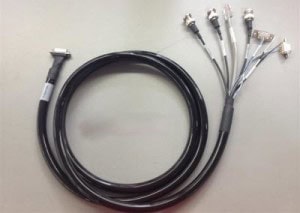With computers, software, and other electronic machines becoming staples in organization, cable organization should become a high priority on a company’s list of ‘to dos’. Not only can it save your time and money, it can also eliminate the need to trace the cables. Organizing your cables can also help improve hardware air flow. This can reduce the chances of equipment failure due to heat retention.
Six Best Practices for Cable Organization
Like any industry, wire and cable manufacturing also has a set of best practices for cable organization. Here is a list of them.
- Label your Cables: The cables should be labelled at the power and the network ends. This will make it easier when you need to trace a cable. You can even create a list of the labels and the corresponding cables to save time.
- Choose the Right Cable Lengths: Choosing the right cable lengths can provide many benefits. The chances of cables tangling will be reduced. The right cable length also supports the creation of wire harnesses and cable assemblies. You can choose either short or custom cables according to your requirement for the harness or assembly.
- Don’t Bend the Cables: This is something that should be avoided as far as possible. Cable bending can hamper the performance of the cables. It can lead to the creation of friction in internal wiring. Enough friction over a period can physically damage the cables as well.
- Bifurcate the Cables: A simple way to keep your cables organized is to bifurcate them into the area of work. This can be power, network, communications, etc. This will allow you to access the cables easily if needed. Also it can reduce the chances of electromagnetic interference.
- Make use of Anchor Points: When a lot of stress is placed on the cable ends, they can suffer from stress, and even break. The cable ends can also get unplugged due to immense weight and pressure. Installing anchor points can ensure that the cable ends do not suffer any kind of damage, or result in unplugging.
- Use Velcro Ties: Velcro ties are good solutions to bundle and separate cables. They are a better option than zip ties, as they can be easily maneuvered. Velcro ties can even cut to custom lengths to fit the needs of a cable assembly.
All of the practices can ensure that your cables within the company are organized, bifurcated, and stored safely and efficiently.


